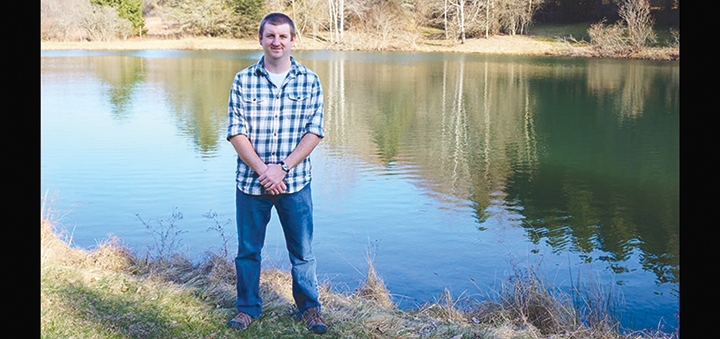Beating The Heat For Summer Bass
Published:
July 10th, 2019
 Submitted Photo
Submitted Photo
Eric Davis
Sun Outdoor Columnist
The heat of summer has finally arrived and the joy of being on the lake is going to keep getting better and better. However, as the water continues to get warmer, the bass will seem to disappear. This is because they become lethargic when the water gets too warm. Warm water holds less oxygen than cold water (think of the amount of carbonation a cold soda has versus a warm soda). When the bass become lethargic, there are a few techniques to try to improve your success on the water.
Surface water is hotter than the water deeper in the lake. Bass will head to the depths to get away from the warm water during the day and will go into the shallows at night to feed. A deep diving crankbait designed to run at least eight feet deep lets you cover a lot of water so that you can try to pinpoint where the bass are hanging out. If the water is clear (you can see 6 feet down or so), try natural minnow colors such as silver and blue or silver and black. If the water is murkier, try firetiger or bright yellow and black. I have had luck using a crankbait that runs 12 feet deep in 8-10 feet of water. This makes the bill of the crankbait dig into the bottom and stir up silt. The cloud of silt can attract fish to come investigate. Areas to try deep diving crankbaits include the area in front of a point, submerged islands, or the edges of weed beds. If you start to notice a pattern of where the fish are hanging out, such as the windblown side of a point, you can use other deep-water tactics such as drop shot or Carolina rigs.
Just like humans do, bass will seek shade from the sun when the lake gets hot. In some lakes, shallow areas with lily pads offer enough of a break from the sun to hold bass. When fishing lily pads, I like to have a two-rod approach. The first rod has a floating plastic frog tied on that I use cover a larger area. If I have a fish try to eat the frog but I miss setting the hook or I see a fish following the frog but not eat it, I have my second rod with a straight-tail plastic worm rigged Texas-style without any weight. I throw the worm to where the fish tried to eat the frog and watch the line as it sinks. Both rods should be rigged with heavy duty line as fish will take off and wrap you up in the lily pads. In lakes without lily pads around the shallows, a medium to deep depth weed bed offers protection to the bass.
In addition, weed beds provide oxygen to the water. Depending on the depth I will use quarter or three-eighth ounce bullet weights ahead of a Texas-rigged seven inch curly-tailed worm. In heavy weeds, a heavier weight may be needed or you may need to peg the weight in place so the soft plastic can follow the weight into the dense weeds. Weedless jigs tipped with plastic trailers that look like crawfish pincers are another option. On lakes with a lot of human development, boat docks can be the best places to fish. Throw a shallow diving crankbait up by shore so that you retrieve it down the entire length of the dock and be prepared for fish to come charging out from the shadow of the dock to attack your lure. Sometimes you don’t have to get close to the dock as the shadow is to the side of the dock based on the sun’s position and the fish will be in the shadow.
Fresh flowing water means a constant supply of oxygen and most likely invertebrates that will attract small fish that bass like to feed on. So, at the mouth of feeder streams entering the lake, trying crankbaits or swimbaits to mimic prey can get bass to bite.
As the summer continues on, be ready to face the challenge of lethargic bass but now you have a few tactics to have ready.
Comments







